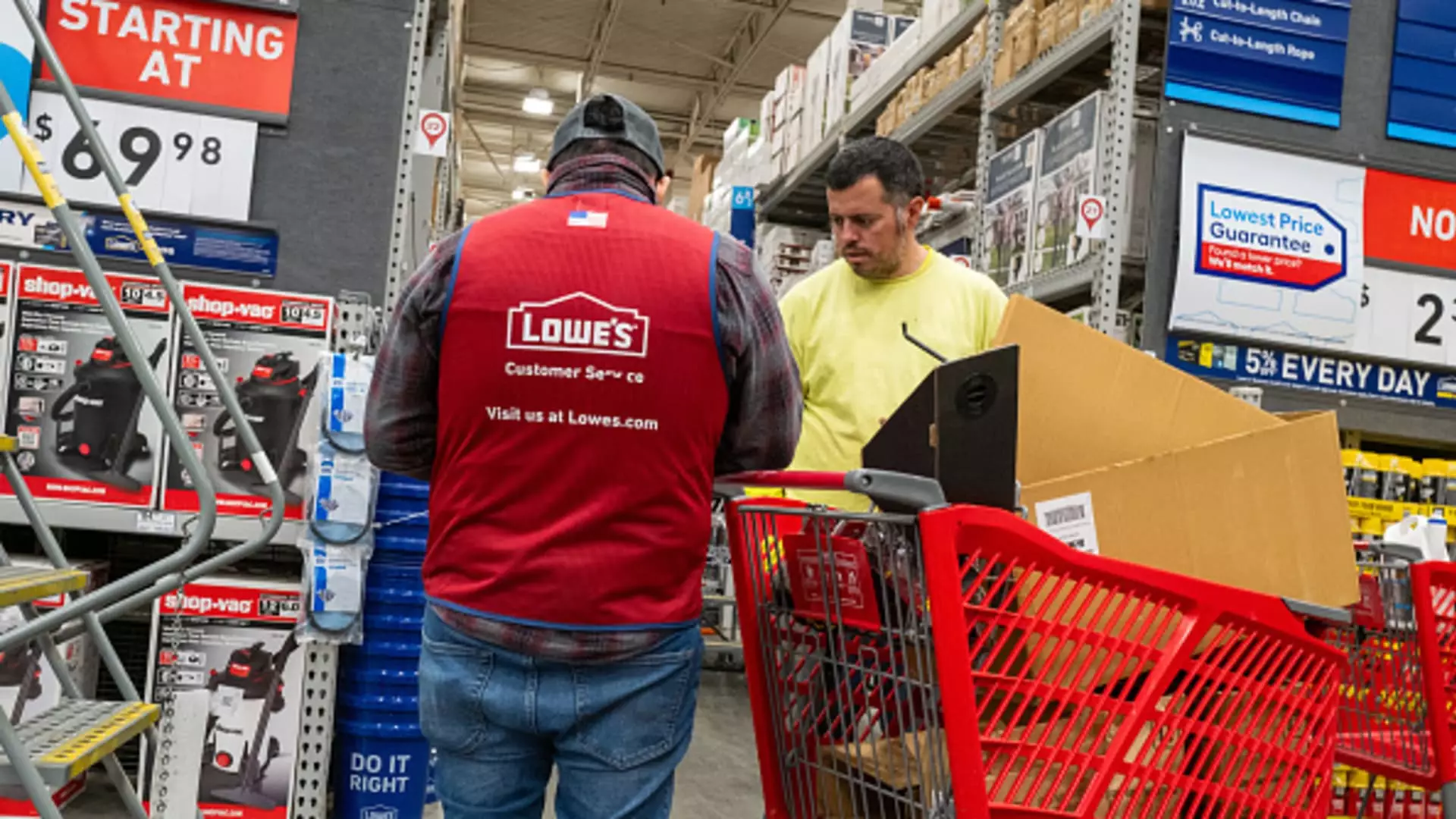Lowe’s recently announced a cut in its full-year forecast, citing a decline in quarterly sales and projecting weak home improvement spending for the second half of the year. The company now expects total sales to fall between $82.7 billion and $83.2 billion for the year, a decrease from its previous projection of $84 billion to $85 billion. Furthermore, it anticipates a comparable sales decline of 3.5% to 4%, compared to its prior forecast of a 2% to 3% decrease. Adjusted earnings per share are now estimated to be in the range of $11.70 to $11.90, down from the previous outlook of $12 to $12.30.
In an interview with CNBC, CEO Marvin Ellison attributed the current consumer behavior to the anticipation of interest rate cuts by the Federal Reserve. He mentioned that consumers are holding back on big-ticket purchases, such as major home projects, as they wait for interest rates to decrease. Ellison also highlighted the impact of inflation and the economic backdrop on consumer sentiment. He noted that many of Lowe’s customers are homeowners with fixed 30-year mortgage rates below 4%, which contributes to their reluctance to take on additional debt with higher interest rates.
For the fiscal second quarter, Lowe’s reported adjusted earnings per share of $4.10, surpassing the $3.97 expected by Wall Street analysts. However, the company’s revenue fell short of expectations, coming in at $23.59 billion versus the anticipated $23.91 billion. Net income for the quarter declined to $2.38 billion, or $4.17 per share, compared to $2.67 billion, or $4.56 per share, in the previous year. Despite a $43 million pretax gain from the sale of its Canadian retail business, Lowe’s experienced a year-over-year sales decline for the sixth consecutive quarter. Comparable sales dropped by 5.1%, driven by reduced discretionary home projects and unfavorable weather conditions.
Lowe’s quarterly results and outlook were shared during a period of heightened scrutiny on consumer spending, as investors and economists monitor economic indicators and corporate performance. Factors such as subdued job growth and fluctuating market conditions have added to the uncertainty surrounding American households’ financial well-being. In light of these challenges, consumer-focused companies like Lowe’s and its competitor, Home Depot, face mounting pressure to navigate through a period of economic flux and shifting consumer preferences.
Despite the current market conditions, Marvin Ellison remains optimistic about the long-term prospects of the home improvement industry. He pointed out demographic trends, such as aging housing stock, increased household formation among millennials, and Baby Boomers choosing to renovate their existing homes. According to Ellison, these factors will drive growth in the industry once consumer sentiment improves. Lowe’s is positioned to capitalize on these trends and gain market share when the industry experiences a turning point.
Lowe’s recent financial results and revised forecasts shed light on the challenges facing the home improvement retailer in a competitive market environment. The company’s ability to adapt to changing consumer behaviors and economic conditions will be crucial in determining its future success. As consumer sentiment evolves and market dynamics shift, Lowe’s must focus on innovation and strategic initiatives to maintain its competitive edge in the industry.

